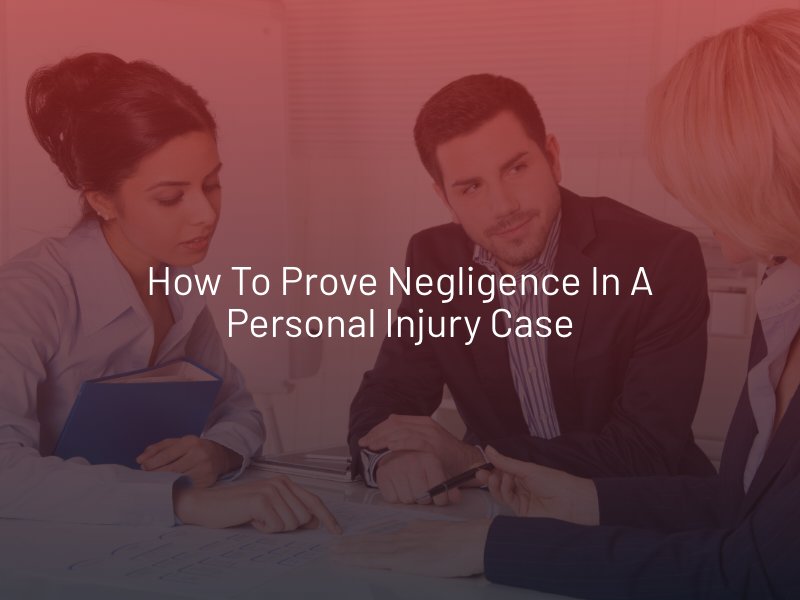How To Prove Negligence in a Personal Injury Case
If you have been injured due to someone else’s negligence, you have the right to seek compensation for your damages. However, to succeed in a personal injury claim, you must prove the defendant’s (at-fault party’s) negligence.

Elements of Negligence
To establish negligence, you must demonstrate the following elements:
Duty of Care
The first step is to prove that the defendant owed you a duty of care. This means that the defendant had a legal obligation to act reasonably and avoid causing harm to others. For example, drivers owe a duty of care to others on the road to follow traffic laws and drive responsibly.
Breach of Duty
Once you have established that a duty of care existed, the next step is to show that the defendant breached that duty. This involves proving that the defendant’s actions or inactions deviated from what a reasonable person would have done in similar circumstances. It is crucial to provide evidence that supports the claim of negligence, such as witness statements, expert testimony, surveillance footage, or accident reconstruction reports.
Causation
Causation is a vital element, which requires evidence of a clear link between the defendant’s actions and the harm you suffered. Medical records, expert medical testimony, and other evidence can help establish the connection between the incident and your injuries.
Damages
As a result of the defendant’s negligence, you suffered damages. Negligence alone, without actual injuries or losses, is not enough to establish a personal injury claim. These losses can include, for example, medical expenses, lost wages, property damage, pain and suffering, emotional distress, etc.
Types of Evidence You Need to Prove Negligence
The evidence needed to support a negligence claim can vary depending on the circumstances of the accident, but here are some common types that are often crucial:
- Eyewitness Testimony: Statements from individuals who witnessed the accident can be highly valuable in establishing the sequence of events, the actions of both parties involved, and who might have been at fault.
- Photographs and Videos: Visual evidence can help recreate the scene and demonstrate any hazardous conditions or actions that contributed to the accident.
- Medical Records: Medical records are essential in documenting the extent of your injuries and the medical treatment received.
- Police Report: If law enforcement responded to the accident, their official report can help substantiate your version of events. It provides an unbiased account and may include statements from the involved parties and witnesses.
- Maintenance and Inspection Records: In certain cases, maintenance and inspection records can be critical. For example, truck accidents, slip and fall accidents, or incidents caused by defective products.
- Surveillance Footage: If available, security or traffic camera footage can provide unbiased visual evidence of the accident.
- Expert Testimony: In more complex cases, experts such as accident reconstruction experts or medical experts may be called upon to analyze the evidence and recreate the events leading up to the accident or help explain the connection between the injuries and the defendant’s actions.
- Documentation of Damages: Proper documentation strengthens your claim for compensation. This includes medical bills, property damage receipts, lost wages, and any other financial costs incurred due to the injuries.
Since each case is unique, it is essential to consult an experienced Las Vegas personal injury attorney who will tailor an approach to your specific circumstances.